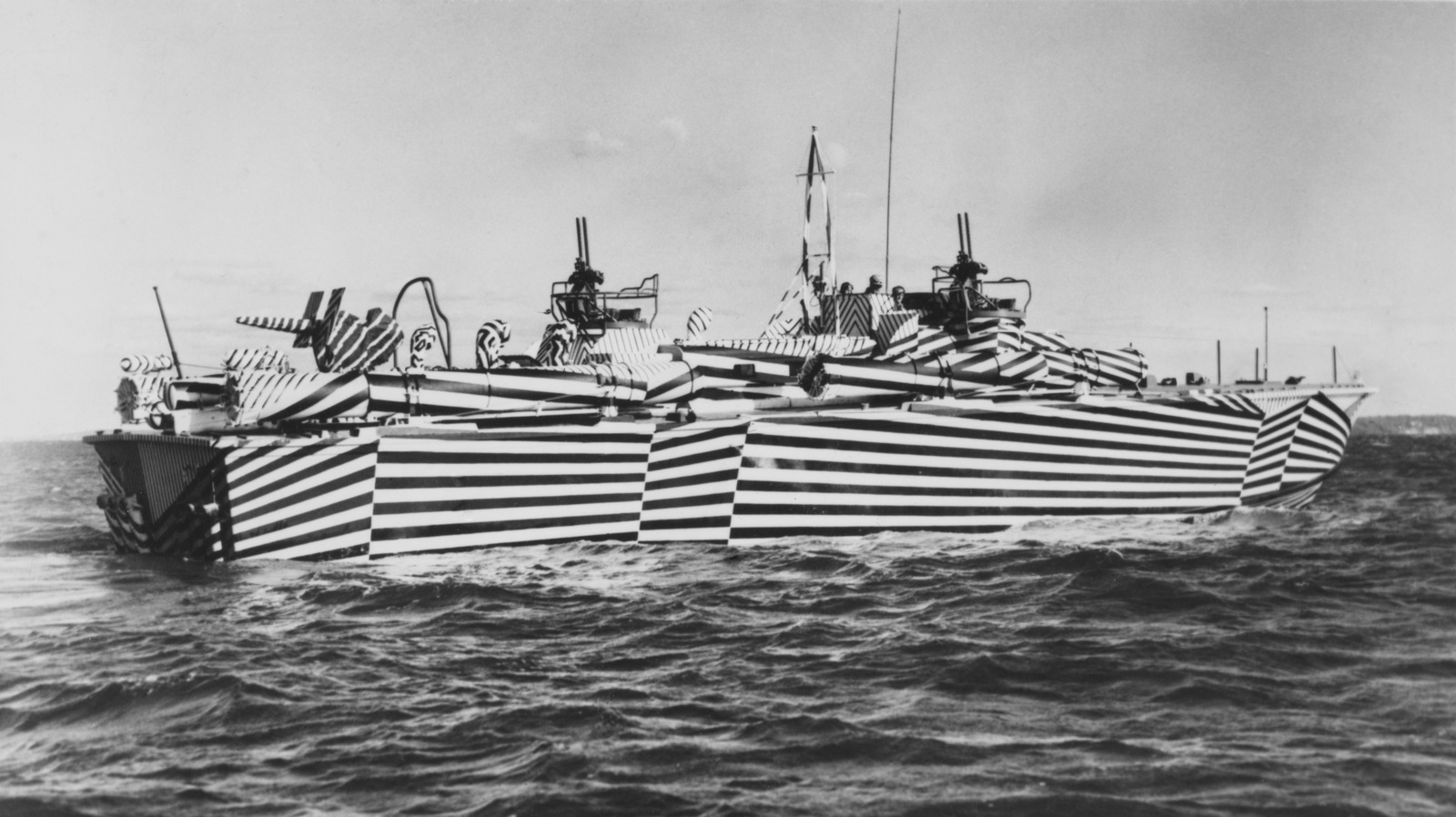The HMS Argus was an early aircraft carrier constructed for the Royal Navy. The vessel didn’t enter World War I until 1918 when it was commissioned, but it didn’t start out as a carrier. Instead, the Argus began life as an ocean liner, but the war changed British naval priorities, and it was remade into a warship that also happened to be the world’s first true aircraft carrier. The Argus entered service with Dazzle Camouflage, which was painted in a very specific manner, using wide, interlocking, and intersecting lines.
Instead of painting the Argus with black and white lines, as the images suggest, its camo pattern included three colors. The vessel’s camo was painted in white, black, and light blue colors, and the reason for the pattern and coloration was to trick would-be attackers. When viewed through a periscope, the line of the carrier made it difficult to orient on the water. It wasn’t clear whether the vessel was one or more ships, nor was it clear which direction it traveled.
This was the benefit of using Dazzle Camouflage because, while the Argus was identifiable as a ship, it wasn’t clear what type of vessel it was or where it was going, making targeting difficult in low light conditions. The Argus was later recommissioned and partially modernized to be used for training leading up to WWII, and after the conflict, it was scrapped.
[Featured image by U.S. Navy via Wikimedia Commons | Cropped and scaled | Public Domain]







